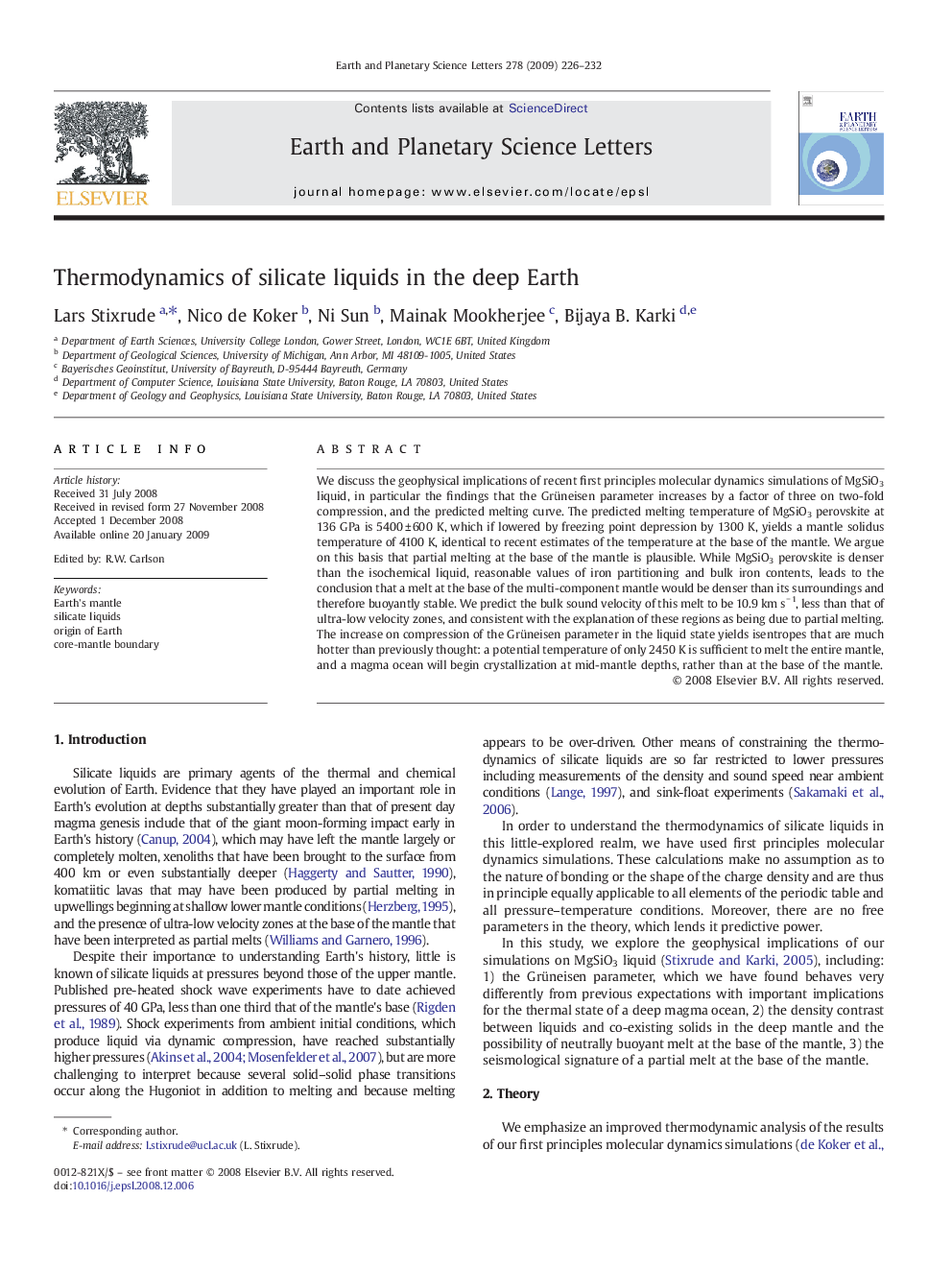| کد مقاله | کد نشریه | سال انتشار | مقاله انگلیسی | نسخه تمام متن |
|---|---|---|---|---|
| 4679323 | 1634879 | 2009 | 7 صفحه PDF | دانلود رایگان |

We discuss the geophysical implications of recent first principles molecular dynamics simulations of MgSiO3 liquid, in particular the findings that the Grüneisen parameter increases by a factor of three on two-fold compression, and the predicted melting curve. The predicted melting temperature of MgSiO3 perovskite at 136 GPa is 5400 ± 600 K, which if lowered by freezing point depression by 1300 K, yields a mantle solidus temperature of 4100 K, identical to recent estimates of the temperature at the base of the mantle. We argue on this basis that partial melting at the base of the mantle is plausible. While MgSiO3 perovskite is denser than the isochemical liquid, reasonable values of iron partitioning and bulk iron contents, leads to the conclusion that a melt at the base of the multi-component mantle would be denser than its surroundings and therefore buoyantly stable. We predict the bulk sound velocity of this melt to be 10.9 km s− 1, less than that of ultra-low velocity zones, and consistent with the explanation of these regions as being due to partial melting. The increase on compression of the Grüneisen parameter in the liquid state yields isentropes that are much hotter than previously thought: a potential temperature of only 2450 K is sufficient to melt the entire mantle, and a magma ocean will begin crystallization at mid-mantle depths, rather than at the base of the mantle.
Journal: Earth and Planetary Science Letters - Volume 278, Issues 3–4, 25 February 2009, Pages 226–232